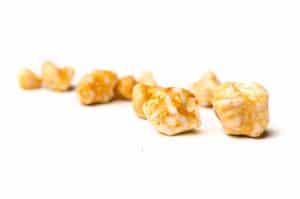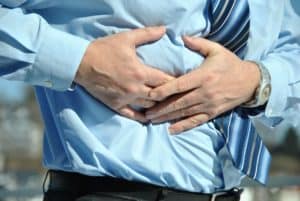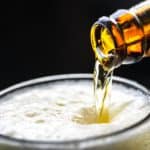What do Gallstones look like?
 A patient may develop multiple gallstones ranging in size from as small as a grain of sand to about 0.5 cm. Though quite rare, it’s not impossible to find gallstones as large as 5 cm.
A patient may develop multiple gallstones ranging in size from as small as a grain of sand to about 0.5 cm. Though quite rare, it’s not impossible to find gallstones as large as 5 cm.
When there are only a few gallstones, they tend to be larger and more rounded. Multiple gallstones are smaller and tend to be multi-sided.
Most gallstones are yellowish or greenish in color.
These types are made of at least 80% cholesterol and are called cholesterol gallstones.
Dark brown or black stones are called pigment gallstones. They are formed mainly from bilirubin and calcium salts in the bile.
What are Gallstones Made Of?
Gallstones are made of hardened bile components.
The liver produces bile, which is a thick dark liquid made up of acids, salts, cholesterol, water, lecithin, pigments, and waste products.
Bile plays an important role in digestion. It dissolves fats and helps eliminate waste products.
Bile is stored in the gallbladder, which is a sac on the upper right side of the abdomen located just below the liver.
How are Gallstones formed?
The cholesterol in the bile is normally dissolved by the bile acids.
However, when there’s too much cholesterol for the bile acids to dissolve, the undissolved cholesterol builds up to form crystals. These crystals then stick together and become gallstones over time.
Bilirubin and other pigment components also contribute to gallstone formation. People suffering from health conditions like liver cirrhosis produce too much bilirubin. High levels of bilirubin in the bile increases the chance of developing gallstones.
A gallbladder that does not empty completely is another reason why gallstones form. The bile stays in the bladder longer than normal and this causes the fluid to thicken. The concentrated bile will eventually solidify and become gallstones.
Recurring abdominal pain may indicate the presence of gallstones. Of course, it gets scarier by the minute if all you knew about gallstones was the pain. Thus, it helps to know more about gallstones and find answers to important  questions. For instance, what are gallstones made of? What do they look like? Are they caused by stress? How is their presence diagnosed and treated? Once you’ve figured out the answers to these questions, you’d be able to handle your condition better.
questions. For instance, what are gallstones made of? What do they look like? Are they caused by stress? How is their presence diagnosed and treated? Once you’ve figured out the answers to these questions, you’d be able to handle your condition better.
How do you know you have Gallstones?
Interestingly, a person can have gallstones yet not suffer from any symptom. The condition may go on undetected for years. This is called asymptomatic gallstones and does not require treatment.
Once gallstones cause obstruction, however, the symptoms can hardly be ignored.
When a gallstone is forced out of the gallbladder or when it blocks the bile duct, it causes intense pain.
The pain will be felt over the upper right quadrant of the abdomen and may radiate to the breastbone, shoulders, and the back between the shoulder blades. The pain intensifies and may last several minutes to a few hours.
Other symptoms are nausea, heartburn, jaundice, dark urine, light-colored stool, fever, and chills.
How are Gallstones Confirmed?
The symptoms mentioned almost always indicate the presence of gallstones. Your doctor will conduct tests to confirm if, indeed, your pain and symptoms are caused by these stones.
Several tests can be done to diagnose gallstones, but the most commonly used test is an abdominal ultrasound.
It is a non-invasive procedure and poses no risk to you. It is also inexpensive and painless.
But how reliable is an ultrasound and what do the stones look like in this diagnostic test? An abdominal ultrasound uses sound waves to produce an image of the gallbladder and the bile ducts.
Gallstones are larger than 4-5 mm show as bright white shapes with a black shadow behind them.
Abdominal ultrasound, however, does not reliably detect gallstones smaller than this size or those lodged in the bile duct. In either case, it is recommended to get an endoscopic ultrasound or an MRI scan.
Can Gallstones be Resolved?
You have several options depending on the evaluation of your symptoms. Oral medications can be used to dissolve small cholesterol gallstones. For more advanced cases, though, the gallbladder may need to be surgically removed. In cases where gallstones have obstructed the ducts, a medical procedure to extract or destroy the gallstones may be required in addition to gallbladder removal.
If you suspect gallstones are causing your abdominal pains, it’s best to consult your doctor first.
The important thing is that you know what’s up ahead and that there are medical methods available just in case.
It will also be to your benefit to know the basics of how your gallbladder works, what gallstones look like, how they can wreak havoc to your health, and what you can do about it.
You may also find this article on Symptoms of a Gallstone Attack interesting to read – CLICK HERE

